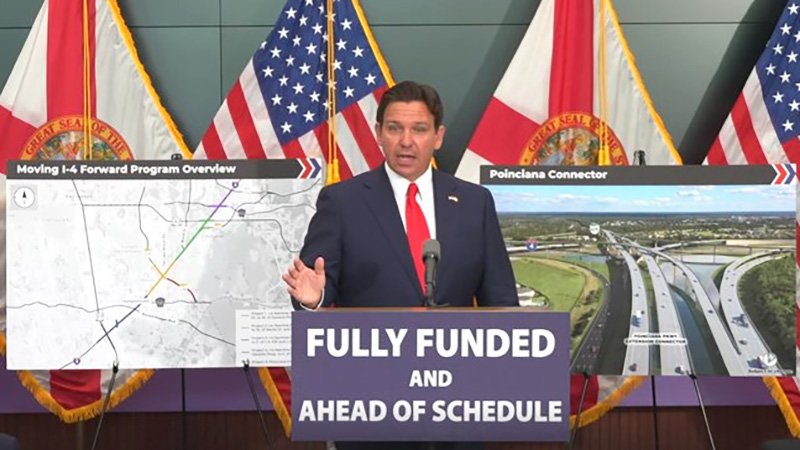Jane Jacobs identified four key ingredients for good urban settings: compact development, varied buildings, mixed uses and short blocks. Here's why these ingredients are important and how certain regions in the U.S. might face more difficulty in implementing them than others.
Read MoreThe traffic engineering profession has three responses to fatal crashes: blame the driver, call for more engineering or conclude it was an accident that couldn't be prevented. These are understandable human reactions. Here's why they're also inadequate and what should be done instead.
Read MoreIn this episode of the Strong Towns Podcast, Chuck is joined by Eric Goldwyn, a leading urban scholar and transit expert, to discuss the benefits of high-speed rail and how it could brought to the U.S.
Read MoreThe U.S. is in a massive housing bubble fueled by widespread fraud. With banks incentivized to look away and Wall Street and Washington incentivized to keep housing prices artificially high, a bottom-up approach is the only hope for bringing sanity back to the housing market.
Read MoreIf you could ask anything from a downtown redevelopment project, what would it be? For a lot of people, it’s a place to sit. This may be surprising to some, but public seating plays an important role in creating prosperous communities. Here are a few of the reasons why.
Read MoreNice, California, doesn’t have nice streets. But it could, if city planners started thinking about road infrastructure in a way that prioritizes safety and walkability over asphalt. Here are a couple of redesign options, inspired by a Crash Analysis Studio held in the city.
Read MoreBeing a member of the Strong Towns movement isn’t just about increasing your knowledge of city planning and what your town can do better. It’s also about allowing that knowledge to affect your own behavior. No change is cheaper than behaving in a way that helps everyone get home safely
Read MoreSecret projects. Preventable pedestrian deaths. False promises of safety and support. This is what we — as a movement, as a nation, as a people — are up against. It’s time for a change.
Read MoreBeing an advocate for safer, more resilient cities means going up against big obstacles and decades of momentum. It can seem overwhelming, but change is already happening across North America. Here’s how local heroes are making their cities stronger.
Read MoreOnce a city acknowledges that it can’t afford maintain its infrastructure, it’ll change its investment pattern to be more resilient….right? Actually, many cities try to make more money magically appear so they can continue that pattern. Here’s why “How do we get more money?” is the wrong question and what cities should be asking, instead.
Read MoreChurches occupy an awkward spot in the parking debate. Their parking lots are necessary, but only a couple of times a week. Otherwise, the lots sit empty, wasting valuable land. How can churches and cities handle this problem? Here are three possibilities.
Read MoreMany cities try to improve their downtowns through master plans, hoping that grand projects will draw residents and customers into the city core. But this often fails because truly strong, attractive downtowns form through incremental development.
Read MoreIf you are a tourism marketer, how can you work to make your town more sustainable, resilient and attractive to visitors? And how do you do it in a way that balances the needs of the community? Here are a few ideas to get you started.
Read MoreNorth America is facing two widespread crises at the same time: housing and loneliness. This group is proving that cohousing might be the solution to both.
Read MoreBuilding affordable housing seems like a win for cities struggling in the Housing Trap. But between its top-down nature and the public subsidies it requires, affordable housing can actually make things worse.
Read MoreThey say insanity is doing the same thing over and over again and expecting different results. Oregon policymakers seem to disagree, as they plan to pour $30 million of taxpayer money into reviving container shipping services at the Port of Portland…even though it’s been a consistent economic failure.
Read MoreRates of loneliness and unhappiness are on the rise in the United States, but our European counterparts don’t seem to have the same problem. Why? Part of the reason is the way our built environment isolates us.
Read MoreFrom college students trying to make ends meet to older individuals who need support from live-in caretakers, occupancy limits make life unnecessarily difficult for a lot of people. Colorado has passed a law that’s going to change that.
Read MoreCity engineers rely on faulty logic and misrepresentations to maintain the status quo. This was made blatantly clear in a recent letter from the City Engineers Association of Minnesota (CEAM) — and it’s why a growing number of engineers are breaking from the party line to support reform. Here are CEAM’s top four arguments against parking reform and why they’re wrong.
Read MoreFlorida Governor Ron DeSantis signed legislation to accelerate road projects, claiming it will make driving less miserable. However, driving in Florida isn’t miserable because of a lack of roads —it’s miserable because the road network is designed in nonsensical, dangerous ways that increase congestion and make it impossible to drive anywhere in a straight line.
Read More



















